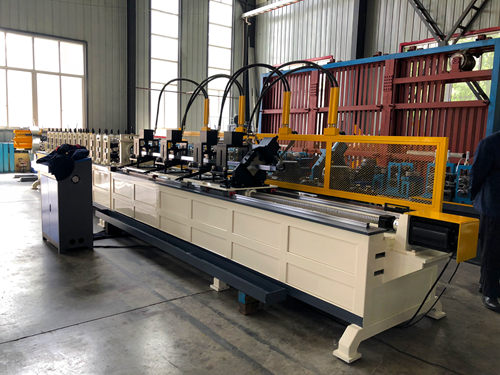
The Evolution of Stud and Track Forming Machines
In the fast-paced world of modern construction and manufacturing, efficiency and precision have become paramount. One significant advancement in this field is the stud and track forming machine, a vital tool that has revolutionized the way metal framing components are produced. This article will explore the structure, functionality, and benefits of stud and track forming machines, along with their impact on the industry.
Understanding Stud and Track Forming Machines
Stud and track forming machines are specialized equipment designed to create metal studs and tracks used in wall framing systems. These machines typically utilize cold-formed steel, a material known for its strength, durability, and lightweight properties. The forming process involves feeding steel coils into the machine, which then shapes the metal into the desired profiles through a series of rollers and dies.
The primary components of these machines include the coil feed system, forming station, cutting station, and control panel. The coil feed system ensures a steady supply of metal, while the forming station meticulously shapes it into studs and tracks. The cutting station ensures that each piece is cut to the precise length needed, and the control panel allows operators to adjust settings for various sizes and profiles.
The Forming Process
The forming process in stud and track machines is quite complex yet remarkably efficient. Initially, the coil is unwound and straightened before entering the forming station. This stage involves multiple passes through a series of rollers, each carefully designed to impart specific bends or shapes into the metal. The machine utilizes advanced technology to maintain consistent tension and alignment throughout the process, ensuring high levels of accuracy.

Once the studs and tracks are formed, they pass to the cutting station, where they are cut to the required lengths. Some machines offer the capability to produce a variety of profiles in one run, allowing for greater versatility. Advanced software systems often manage these processes, enabling operators to program different profiles and lengths seamlessly.
Benefits of Stud and Track Forming Machines
The advent of stud and track forming machines brings numerous advantages to the construction and manufacturing industries. One of the most significant benefits is efficiency. These machines can produce large quantities of studs and tracks in a fraction of the time it would take using traditional methods. As a result, construction projects can progress more rapidly, reducing labor costs and improving overall productivity.
Precision is another critical advantage. The automated nature of these machines minimizes human error, leading to consistent quality in the finished products. This reliability means that builders can expect a perfect fit when assembling frames, which reduces the need for adjustments on-site and enhances overall project quality.
Additionally, using cold-formed steel offers environmental benefits. The process generates less waste compared to traditional building materials, and steel is infinitely recyclable. This sustainability aspect has become increasingly important as industries strive to reduce their ecological footprints.
Conclusion
In conclusion, stud and track forming machines represent a significant advancement in the construction and manufacturing sectors. They offer unparalleled efficiency, precision, and sustainability, reshaping how metal framing components are produced. As technology continues to advance, these machines will likely evolve further, maintaining their essential role in modern building practices. The future of construction looks promising, with stud and track forming machines leading the charge toward more efficient and sustainable practices in building structures.